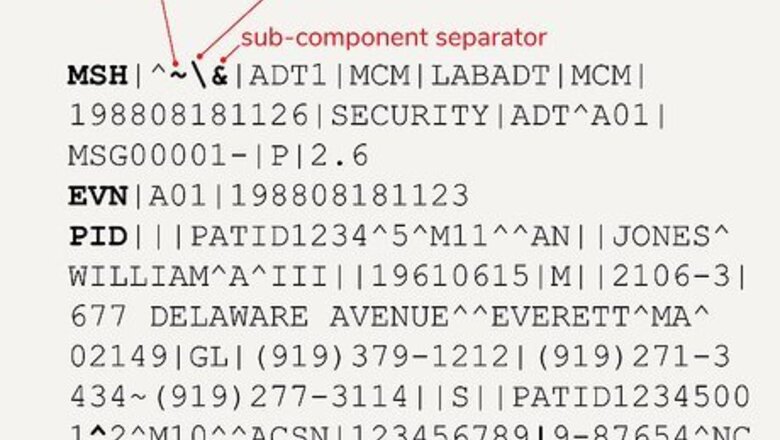
views
X
Research source

Learn HL7 Message Structure. Here is a typical HL7 message with syntax highlighting added to more easily identify the elements in a message: MSH|^~\&|ADT1|MCM|LABADT|MCM|198808181126|SECURITY|ADT^A01|MSG00001-|P|2.6 EVN|A01|198808181123 PID|||PATID1234^5^M11^^AN||JONES^WILLIAM^A^III||19610615|M||2106-3|677 DELAWARE AVENUE^^EVERETT^MA^02149|GL|(919)379-1212|(919)271-3434~(919)277-3114||S||PATID12345001^2^M10^^ACSN|123456789|9-87654^NC NK1|1|JONES^BARBARA^K|SPO|||||20011105 NK1|1|JONES^MICHAEL^A|FTH PV1|1|I|2000^2012^01||||004777^LEBAUER^SIDNEY^J.|||SUR||-||ADM|A0 AL1|1||^PENICILLIN||CODE16~CODE17~CODE18 AL1|2||^CAT DANDER||CODE257 DG1|001|I9|1550|MAL NEO LIVER, PRIMARY|19880501103005|F PR1|2234|M11|111^CODE151|COMMON PROCEDURES|198809081123 ROL|45^RECORDER^ROLE MASTER LIST|AD|RO|KATE^SMITH^ELLEN|199505011201 GT1|1122|1519|BILL^GATES^A IN1|001|A357|1234|BCMD|||||132987 IN2|ID1551001|123456789 ROL|45^RECORDER^ROLE MASTER LIST|AD|RO|KATE^ELLEN|199505011201 Messages are composed of segments, fields, components, and subcomponents. Segments can be thought of as containers that group like kinds of data. These data are contained in a segment's fields. The three-character codes in blue are the segment labels for this message. Each segment contains fields that are separated with the light-blue ‘|’ character. Fields and segments can be repeating. Repeating fields are separated with the red ‘~’ character. Components are the data points within fields, and they are separated with the green ‘^’ character. Sub-components are demarcated with the light-purple ‘&’ separator. These special characters are called control characters. The table contains the standard control characters used in HL7.HowToReadHL7 T1.png
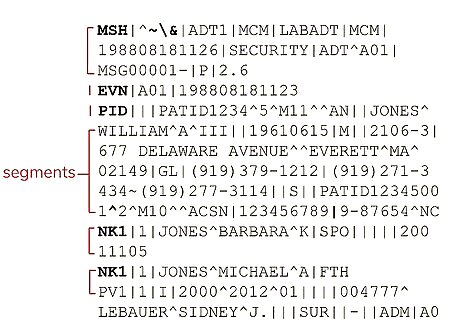
Break the message into segments. Segments are the basic structural elements from which HL7 messages are built. Each message is composed of one or more segments. The message type determines which segments a message contains as well as which ones are optional and which are repeatable. This syntax is dictated by the HL7 version used in creating the message. Segments are re-usable in different message types. The segments in the example message are listed in the table:HowToReadHL7 T3.png
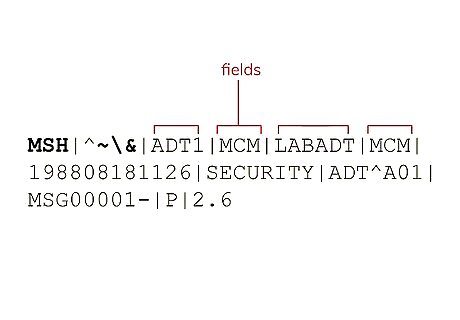
Break the segments into fields. The following diagram is a conceptual model of an HL7 message broken down into segments and fields. The three-character codes used at the start of each segment serve as labels. Fields are notated by extending the segment to include the index number of the field. For example, the first field in the message header would be MSH-1, the second field would be MSH-2, etc. MSH, the message header, is the first segment in every HL7 message and contains message metadata. The second segment in every message is the EVN segment. This contains the event the message triggers. In this example, that event is the scheduling of an inpatient surgery.

Notice in the example message that not all fields contain data. The following snippet of the NK1 (Next of Kin) segment contains empty fields. The empty fields here are indicated by field separators (|) with nothing in between, followed by the date in Yymmdd format: SPO|||||20011105
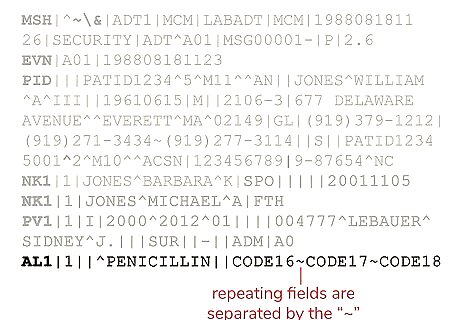
Recognize that repeating fields are separated by the ~ character. This example shows a repeating allergic reaction field (AL1.5[1-3]) in the allergies (AL1) segment: CODE16~CODE17~CODE18
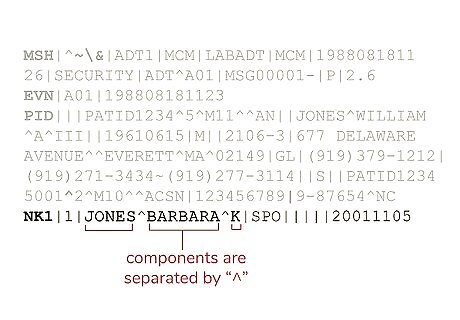
Break the fields into components. Each component in a field is separated by the ^ character. Fields are notated by extending segment notation with a decimal point followed by the index number of the field. The street address component, for example, is part of the address field and it can be indexed with PID-11.1. PID is the patient identification segment. PID-11.1 is the street address component of the address field (PID-11). Components can be further broken down into subcomponents using the & character as a separator.
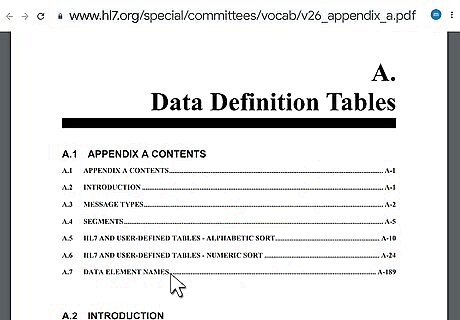
Use the HL7 Data Dictionary to look up elements. The data dictionary for all of the elements contained in a message can be located by referencing the standard for the version of HL7 used to create the message. The version number can be found in the MSH-12 field of any message header. Appendix A of the standard contains a data dictionary for all of the elements in a message. It is available in both PDF and XLS file formats. The data dictionary for HL7 v2.6 is a typical example.
















Comments
0 comment